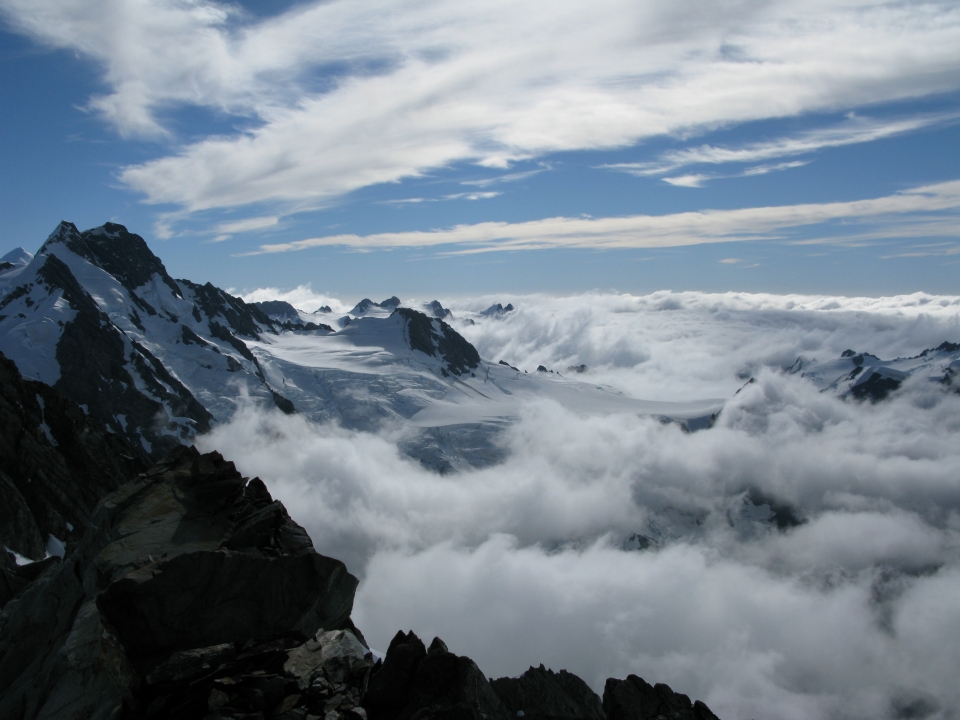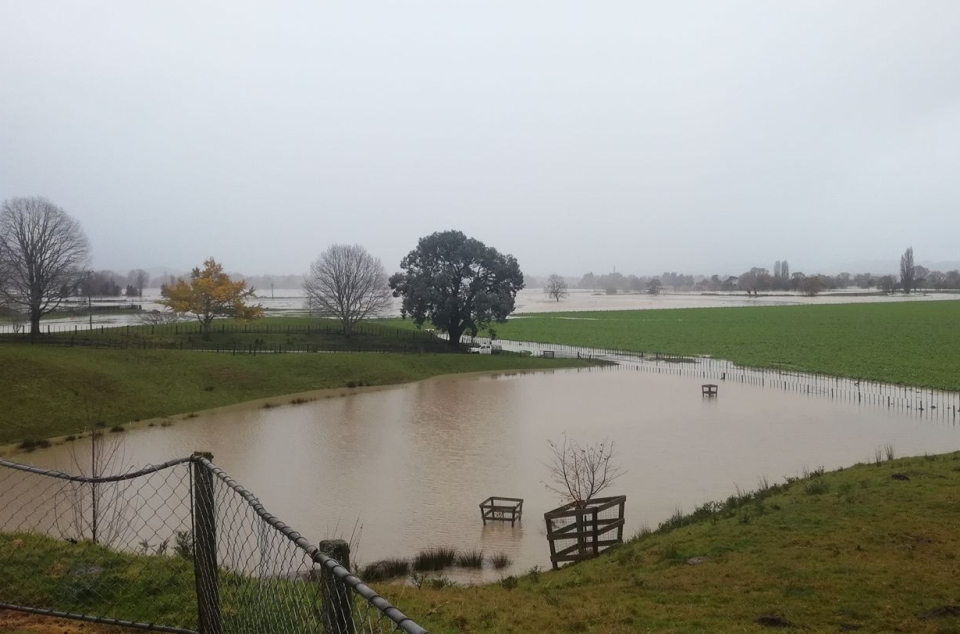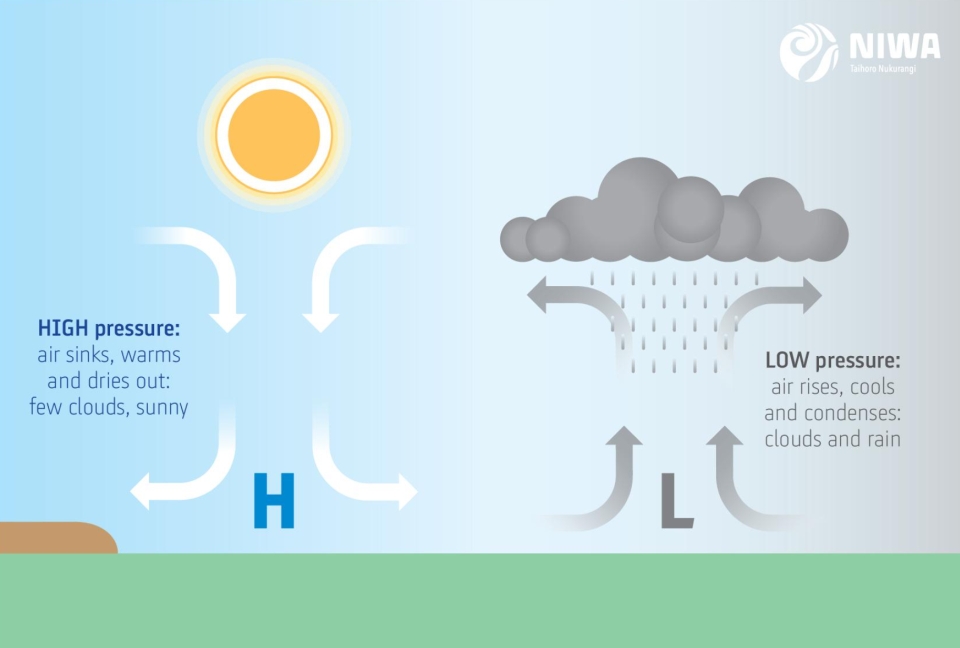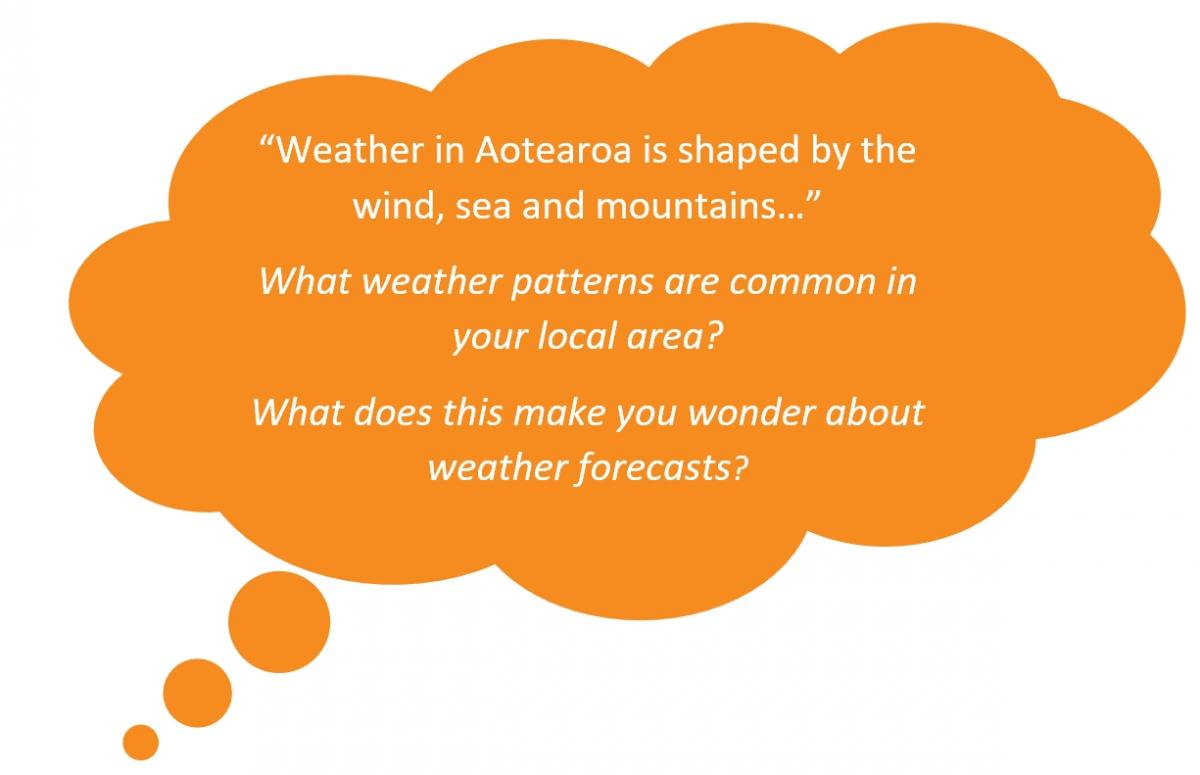You can contact LEARNZ, part of CORE Education, at:
Postal Address:
PO Box 13 678,
Christchurch 8141,
New Zealand

New Zealand’s weather is shaped by wind, sea and mountains.
The weather is the day-to-day conditions, such as rain, snow, wind or sunshine. This is different from climate, which is the pattern of conditions over a long period.
The air that reaches Aotearoa travels over thousands of kilometres of ocean. The sea cools air from the tropics, and heats air from Antarctica so the ocean moderates our climate. Inland areas of Aotearoa have more extreme climates – colder in winter and hotter in summer. As air flows over the ocean, it also gathers moisture.
New Zealand’s weather is affected by the mountains and the wind that flows over and around them. When north-west winds reach the West Coast and the Southern Alps, they rise up over the mountains. As the air rises it cools, causing clouds to form. They drop lots of rain on the West Coast and the mountains. The air then passes over to the east coast. It has no moisture left, so it brings dry, warm weather to Canterbury and Otago, on the eastern side of the mountains.

The weather was very important in Māori life. The seasons, the wind and the rain affected daily activities, especially growing crops and fishing. There were dozens of words to describe the weather. There were also stories to explain wind, thunder, rainbows and other natural events.
In Māori tradition, Tāwhirimātea was the god of the weather. His parents were Ranginui (the sky father) and Papatūānuku (the earth mother), who lay close together. To let light into the world, Tāwhirimātea’s brothers separated their parents. But Tāwhirimātea did not agree to this. To show his anger he sent out his children, the four winds, and clouds that brought rain and thunderstorms. This destroyed trees in the forests ruled by his brother Tāne. But Tāwhirimātea could not defeat his brother Tūmatauenga, god of the people. So, the battle between people and the weather continues today.
Every day, people and remote sensors record current weather such as rain, temperature, wind speed, air pressure and humidity. This information is entered into a computer modelling system, which performs billions of calculations to predict future weather.
Weather balloons, tracked with radar, can record conditions high up in the atmosphere. Satellite images of the weather over Aotearoa are sent back every hour.

Changes in air pressure bring changes in the weather. We live at the bottom of the atmosphere, and the weight of all the air above us is called air pressure. Air pressure is measured by a barometer. When a low-pressure system moves into an area, it usually brings cloud, wind, and rain. High-pressure systems usually lead to calm weather.
Air rises in areas of low pressure. When the air moves up, the water vapour will cool and condense, leading to the formation of clouds and rain. Air sinks towards the ground in areas with high pressure. This air heats and loses moisture as it sinks leading to dry, pleasant weather and usually lots of sunshine.
 Along with high and low pressure we also find fronts. A front is a boundary between two different air masses. Along fronts there is often stormy weather, sharp temperature changes, and rapid shifts in wind direction. A cold front divides warm air and cool air, moving so that the cooler air replaces the warmer air. A warm front works in the opposite way, with warmer air replacing the cooler air.
Along with high and low pressure we also find fronts. A front is a boundary between two different air masses. Along fronts there is often stormy weather, sharp temperature changes, and rapid shifts in wind direction. A cold front divides warm air and cool air, moving so that the cooler air replaces the warmer air. A warm front works in the opposite way, with warmer air replacing the cooler air.
A weather bomb describes a certain type of weather event created when air pressure drops very quickly. This plummeting air pressure creates unstable conditions bringing severe wind and rain. Weather bombs in Aotearoa tend to cause severe damage over small areas.
Complete the Weather in Aotearoa quiz.
> Discover more about weather and sever weather events.